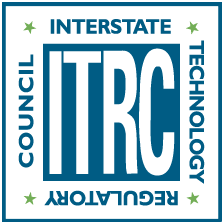Team Contacts
Team Leaders
Alex Wardle
US Environmental Protection Agency (EPA)
[email protected]
Ed Winner
Remediation Products, Inc.
[email protected]
Program Advisors
Jim Rocco
Sage Risk Solutions LLC
[email protected]
Lesley Hay Wilson
Sage Risk Solutions LLC
[email protected]
Direct Sensing
Todd Mullins
Kentucky Division of Waste Management
[email protected]
Jim Finegan
Kleinfelder
[email protected]
Borehole Geophysics
Andrew Fuller
NHDES
[email protected]
Brian Sandberg
GHD
[email protected]
Surface Geophysics
Jennifer Jevnisek
Minnesota Pollution Control Agency
[email protected]
Todd Kafka
Geosyntec Consultants
[email protected]
Remote Sensing
Glenn Anderson
Aerial Robotics
[email protected]
Devin Castendyk
Golder Associates, Ltd.
[email protected]
Updated 4/22/2022
Click here to download the entire document.


